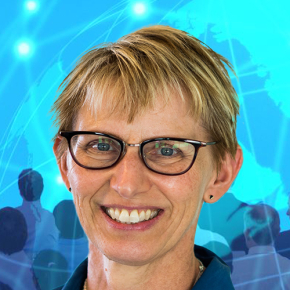The CNRS Institute of Chemistry welcomes Laura Kiessling as the Ambassador in Chemical Sciences
On April 18, Laura Kiessling, Novartis Professor of Chemistry at the Massachusetts Institute of Technology, will start a series of lectures in several French CNRS laboratories as the Ambassador in Chemical Sciences in France. Professor Kiessling’s research focuses on glycoscience and, particularly, understanding and manipulating proteins-carbohydrates interactions at the cell surface as a tool to study biological processes and design new therapeutic treatments. She will tell us all about this interdisciplinary field at the frontier between chemistry and biology.
Carbohydrates are sugars, but not only those in sweets… Why are chemical biologists so interested in this class of organic molecules?
People tend to think about carbohydrates as fuel, but they are also an essential part of all cells on Earth. Indeed, every cell is coated with carbohydrates. We study how cells make these carbohydrates and how they function. For example, we know that bacteria require this carbohydrate coat to live, so we want to understand how it is built and how we might intervene. Such information is vital for next-generation antimicrobial drugs. We also envision that it can help us control our microbiome.
We also focus on elucidating and exploiting how proteins bind to carbohydrates on the cell surface. The identity of carbohydrates on the cell can serve as a kind of identification (ID) card, and proteins can check these IDs. We are especially interested in how multivalent protein-carbohydrate interactions (when multiple proteins bind multiple carbohydrates) mediate selective recognition. We are exploiting these protein–glycan interactions to control immunity—in cancer and infectious disease.
What do you think will be the most important development in this field in the coming years?
Understanding how human proteins read the glycans on the surfaces of cells is exciting as it can teach us how to control immune responses to foreign and self-cells. Beyond recognition, I am excited about the prospect of related gene expression programs to the glycans that appear on the cell's surface. Finally, new strategies to sequence, synthesize, and capture relevant glycans are all needed, and such studies will come from applying chemistry and biology to the problem.
As a CNRS ambassador of Chemical Sciences, what are you most looking forward to during your French conference tour?
I am especially looking forward to talking with French scientists about their research. However, I would not be truthful if I did not mention that I also look forward to traveling the country and eating fantastic food.
